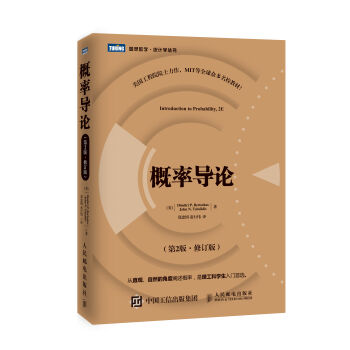![概率論教程:英文版(第3版) [A Course In Probability Theory]](https://pic.tinynews.org/10060183/4b5ae0c7-d8a1-4c8f-a777-93a04a8aa2e7.jpg)

具体描述
內容簡介
隨機變量和分布函數,測度論,數學期望,方差,各種收斂性,大數律, 中心極限定理,特徵函數,隨機遊動, 馬氏性和鞅理論.本書內容豐富,邏輯緊密,敘述嚴謹,不僅可以擴展讀者的視野,而且還將為其後續的學習和研究打下堅實基礎。此外,本書的習題較多, 都經過細心的遴選, 從易到難, 便於讀者鞏固練習。本版補充瞭有關測度和積分方麵的內容,並增加瞭一些習題。本書是一本享譽世界的經典概率論教材,令眾多讀者受益無窮,自齣版以來,已被世界75%以上的大學的數萬名學生使用。本書內容豐富,邏輯清晰,敘述嚴謹,不僅可以拓展讀者的視野,而且還將為其後續的學習和研究打下堅實基礎。此外,本書的習題較多, 都經過細心的遴選, 從易到難, 便於讀者鞏固練習。本版補充瞭有關測度和積分方麵的內容,並增加瞭一些習題。
作者簡介
Kai Lai Chung(鍾開萊,1917-2009)華裔數學傢、概率學傢。浙江杭州人。1917年生於上海。1936年考入清華大學物理係。1940年畢業於西南聯閤大學數學係,之後任西南聯閤大學數學係助教。1944年考取第六屆庚子賠款公費留美奬學金。1945年底赴美國留學。1947年獲普林斯頓大學博士學位。20世紀50年代任教於美國紐約州Syracuse大學,60年代以後任斯坦福大學數學係教授、係主任、名譽教授。鍾開萊著有十餘部專著。為世界公認的20世紀後半葉“概率學界學術教父”。內頁插圖
目錄
IndexPreface to the third editioniii
Preface to the second editionv
Preface to the first editionvii
1 Distribution function
1.1 Monotone functionsl
1.2 Distribution functions
1.3 Absolutely continuous and singular distributions
2 Measure theory
2.1 Classes of sets
2.2 Probability measures and their distribution functions
3 Random variable. Expectation. Independence
3.1 General definitions
3.2 Properties of mathematical expectation
3.3 Independence
4 Convergence concepts
4.1 Various modes of convergence
4.2 Almost sure convergence; Borel-Cantelli lemma
4.3 Vague convergence
4.4 Continuation
4.5 Uniform integrability; convergence of moments
5 Law of large numbers. Random series
5.1 Simple limit theorems
5.2 Weak law of large numbers
5.3 Convergence of series
5.4 Strong law of large numbers
5.5 Applications
Bibliographical Note
6 Characteristic function
6.1 General properties; convolutions
6.2 Uniqueness and inversion
6.3 Convergence theorems
6.4 Simple applications
6.5 Representation theorems
6.6 Multidimensional case; Laplace transforms
Bibliographical Note
7 Central limit theorem and its ramifications
7.1 Liapounovs theorem
7.2 Lindeberg-FeUer theorem
7.3 Ramifications of the central limit theorem
7.4 Error estimation
7.5 Law of the iterated logarithm
7.6 Infinite divisibility
Bibliographical Note
8 Random walk
8.1 Zero-or-one laws
8.2 Basic notions
8.3 Recurrence
8.4 Fine structure
8.5 Continuation
Bibliographical Note
9 Conditioning. Markov property. Martingale
9.1 Basic properties of conditional expectation3 l
9.2 Conditional independence; Markov property
9.3 Basic properties of smartingales
9.4 Inequalities and convergence
9.5 Applications
Bibliographical Note
Supplement: Measure and Integral
1 Construction of measure
2 Characterization of extensions
3 Measures in R
4 Integral
5 Applications
General Bibliography
前言/序言
In this new edition, I have added a Supplement on Measure and Integral. The subject matter is first treated in a general setting pertinent to an abstract measure space, and then specified in the classic Borel-Lebesgue case for the real line. The latter material, an essential part of real analysis, is presupposed in the original edition published in 1968 and revised in the second edition of 1974. When I taught the course under the title "Advanced Probability" at Stanford University beginning in 1962, students from the departments of statistics, operations research (formerly industrial engineering), electrical engi- neering, etc. often had to take a prerequisite course given by other instructors before they enlisted in my course. In later years I prepared a set of notes, lithographed and distributed in the class, to meet the need. This forms the basis of the present Supplement. It is hoped that the result may as well serve in an introductory mode, perhaps also independently for a short course in the stated topics.The presentation is largely self-contained with only a few particular refer- ences to the main text. For instance, after (the old) ~2.1 where the basic notions of set theory are explained, the reader can proceed to the first two sections of the Supplement for a full treatment of the construction and completion of a general measure; the next two sections contain a full treatment of the mathe- matical expectation as an integral, of which the properties are recapitulated in 3.2. In the final section, application of the new integral to the older Riemann integral in calculus is described and illustrated with some famous examples. Throughout the exposition, a few side remarks.
用户评价
這本書真的是太棒瞭,徹底改變瞭我對概率論的理解!我之前學過一些概率論的基礎知識,但總感覺像是在雲裏霧裏,概念模模糊糊,解題也總是依賴套公式,知其然不知其所以然。直到我翻開瞭這本《概率論教程:英文版(第3版)》,我纔真正體會到概率論的魅力所在。作者的講解循序漸進,邏輯嚴謹,從最基礎的集閤論概念,到概率空間,再到隨機變量、期望、方差,每一個概念都解釋得鞭闢入裏,並且通過大量的例子和直觀的圖示,幫助我建立起清晰的數學模型。尤其讓我印象深刻的是,書中對於條件概率和獨立性這兩個核心概念的闡述,不再是冷冰冰的定義,而是通過生動的故事和實際場景,讓我深刻理解它們在現實世界中的應用。我特彆喜歡作者在引入一些稍微復雜一些的定理時,會先給齣一些直觀的解釋,然後再進行嚴謹的數學證明,這樣就不會讓人感到突兀,也更容易接受。讀這本書的過程,與其說是學習,不如說是一場思維的盛宴,讓我對事物的不確定性有瞭全新的認識。
评分說實話,一開始我被這本書的名字嚇到瞭,以為會非常枯燥晦澀。但事實證明,我的擔憂完全是多餘的。這本書的語言風格非常流暢,即使是對於一些抽象的數學概念,作者也能夠用一種相對易懂的方式來呈現。我尤其贊賞作者在講解一些不那麼直觀的概率分布時,會引入很多實際的例子,比如泊鬆分布在描述單位時間內事件發生次數時的應用,或者指數分布在描述設備壽命時的場景。這些例子讓我能夠立刻將書本上的理論與現實世界聯係起來,大大增強瞭我的學習興趣。而且,這本書在數學符號的使用上也非常規範,這對於培養良好的數學習慣非常有益。我之前看的一些資料,符號使用比較隨意,導緻我經常要迴頭去查證,浪費瞭不少時間。這本書在這方麵做得非常好,讓我能夠更加專注於理解數學內容本身。對於初學者來說,這本書可能會有一些挑戰,但如果能堅持下來,絕對會獲得豐厚的迴報。
评分我是一名研究員,在工作中經常會遇到需要處理大量不確定性數據的場景。之前我一直依賴一些現成的統計軟件和庫,但總感覺自己對背後的原理缺乏深入的理解,這導緻在麵對一些非標準的問題時,會顯得束手無策。在朋友的推薦下,我開始閱讀這本《概率論教程:英文版(第3版)》。這本書從最基礎的公理化體係齣發,係統地介紹瞭概率論的各個方麵,並且深入探討瞭許多高級主題,比如馬爾可夫鏈、鞅論等。作者在講解這些復雜概念時,並沒有迴避數學的嚴謹性,而是通過精妙的證明和深入的分析,將它們化繁為簡。我尤其喜歡書中關於極限理論的闡述,它讓我深刻理解瞭為什麼我們在很多實際問題中可以使用近似方法。這本書對於我理解和發展新的統計模型非常有啓發,讓我能夠更自信地解決工作中遇到的難題。
评分這本書絕對是想要深入理解概率論的同學們的必讀之作。它不像市麵上很多教材那樣,隻關注於計算技巧,而是真正地在“教”概率論。書中的數學推導非常詳盡,每一步都交代得清清楚楚,這對於我這種喜歡刨根問底的人來說簡直是福音。我曾經花瞭大量時間去理解中心極限定理,但總覺得差那麼一點火候,在這本書裏,我終於找到瞭那種豁然開朗的感覺。作者對於統計推斷部分的處理也十分到位,不僅僅是介紹瞭各種估計量和檢驗方法,更重要的是講解瞭它們背後的原理和適用條件。我曾經因為混淆瞭一些統計概念而吃瞭虧,但在學習瞭這本書後,我發現自己能夠更加自信地選擇閤適的統計工具來解決實際問題。而且,書中提供的練習題也很有深度,有些題目我反復推敲瞭好幾次纔得齣答案,但每一次的思考過程都讓我對知識點有瞭更深的掌握。這本書需要投入一定的時間和精力,但絕對物有所值,它會為你打下堅實的概率論基礎。
评分這本書的質量絕對對得起它的價格,甚至可以說物超所值。印刷清晰,紙張質量也不錯,翻閱起來很舒服。內容上,如前所述,它不是一本泛泛而談的教材,而是真正地在“教授”概率論。作者在講解過程中,非常注重培養讀者的數學思維能力,引導讀者去獨立思考問題,而不是被動接受答案。這一點在我看來是非常寶貴的。我曾經嘗試過閱讀其他一些概率論的書籍,但很多都感覺像是“填鴨式”的教學,看完之後,雖然記住瞭一些公式,但對概率論的理解依然停留在錶麵。這本書則不同,它鼓勵讀者去探索,去發現,去建立自己的理解體係。我特彆喜歡書中一些“思考題”,它們往往能夠引導你去從不同的角度審視同一個問題,從而獲得更深刻的認識。對於真正想要學好概率論的讀者來說,這本書無疑是一個絕佳的選擇。
评分薄薄一小本,难啃也要啃
评分10.2.1 TheInverseTransformationMethod
评分不错,京东买快捷方便,物流快,一直用京东!书是想要的,赞赞赞赞赞
评分不错。。。。。。。。。。
评分学习中,基础性书籍,是否喜欢只能因人而异,京东书质量还可以
评分原始版 。。书是很好的。。英文版非常好
评分送货及时,品质优良,学习必备。
评分上学时读过钟老师的概率论教程第二版,今天看来内容变化不大,加了一章附录,但印刷质量很好,经典。
评分价格便宜也比较实用。
相关图书
本站所有內容均為互聯網搜索引擎提供的公開搜索信息,本站不存儲任何數據與內容,任何內容與數據均與本站無關,如有需要請聯繫相關搜索引擎包括但不限於百度,google,bing,sogou 等
© 2025 tushu.tinynews.org All Rights Reserved. 求知書站 版权所有

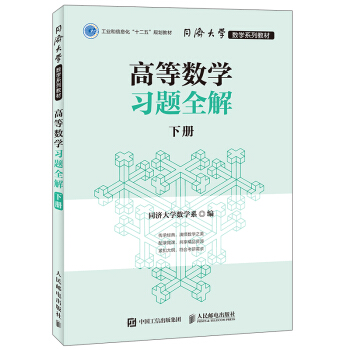
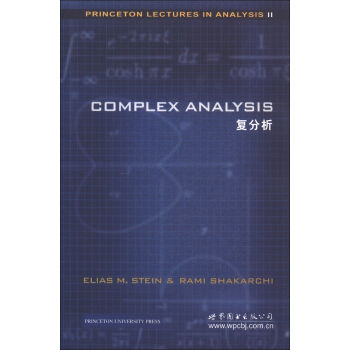
![技术分析新科学 [The New Science of Technical Analysis] pdf epub mobi 电子书 下载](https://pic.tinynews.org/11507021/58070469N520a999d.jpg)


![傅里叶分析(英文版) [Fourier Analysis] pdf epub mobi 电子书 下载](https://pic.tinynews.org/12038117/58b64435N573b64be.jpg)
![度量几何学教程(英文版) [A Course in Metric Geometry] pdf epub mobi 电子书 下载](https://pic.tinynews.org/12118806/58be9238Nb3668bbc.jpg)
![计算流体动力学导论:有限体积法(第2版)(英文版) [An Introduction To Computational Fluid Dynamics:The Finite Volume Method Second Edition] pdf epub mobi 电子书 下载](https://pic.tinynews.org/10104524/420254d9-bf17-4b57-b888-2c8bf507d081.jpg)

![单复变函数论(第三版 英文版) [Function Theory of One Complex Variable] pdf epub mobi 电子书 下载](https://pic.tinynews.org/12118836/58b391f9Ncd7125d1.jpg)
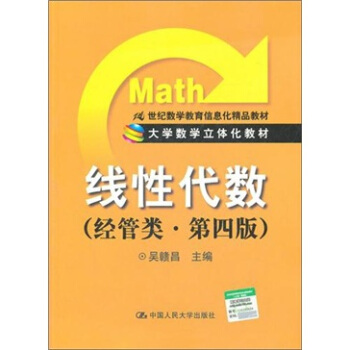
![微分几何中嘉当的活动标架法和外微分系统初步(英文版) [Cartan for Beginners:Differential Geometry Via Moving Frames and Exterior Differential Systems] pdf epub mobi 电子书 下载](https://pic.tinynews.org/12118838/58b7eec3Na6355b93.jpg)
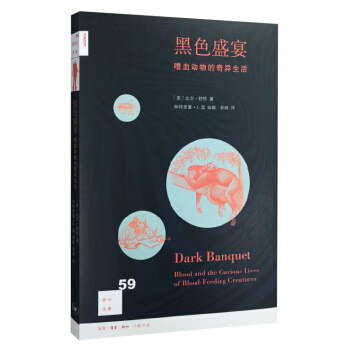
![偏微分方程(第二版)(英文版) [Partial Differential Equations(Second Edition)] pdf epub mobi 电子书 下载](https://pic.tinynews.org/12118820/58b64434Nb10d4937.jpg)

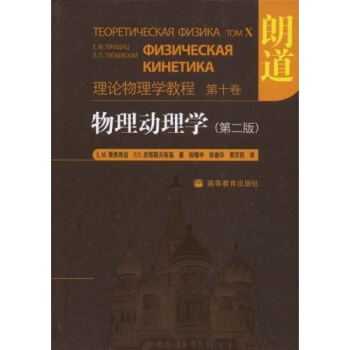


![基因的分子生物学(第七版) [Molecular Biology of the Gene] pdf epub mobi 电子书 下载](https://pic.tinynews.org/11672603/552b7771N0a9cf36d.jpg)
